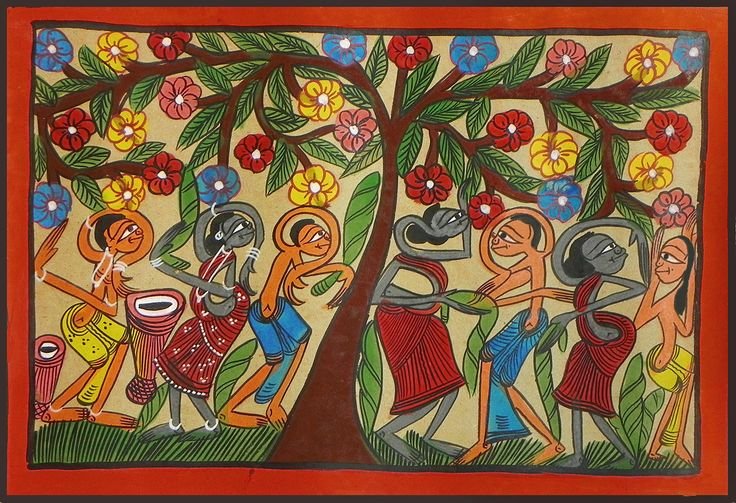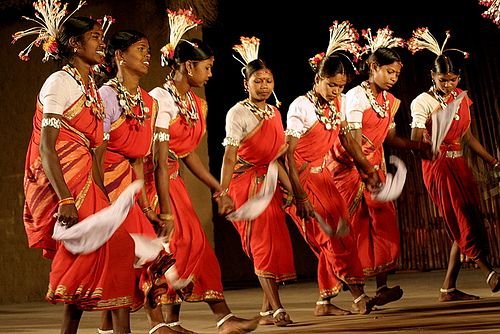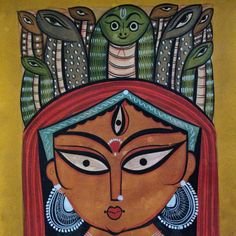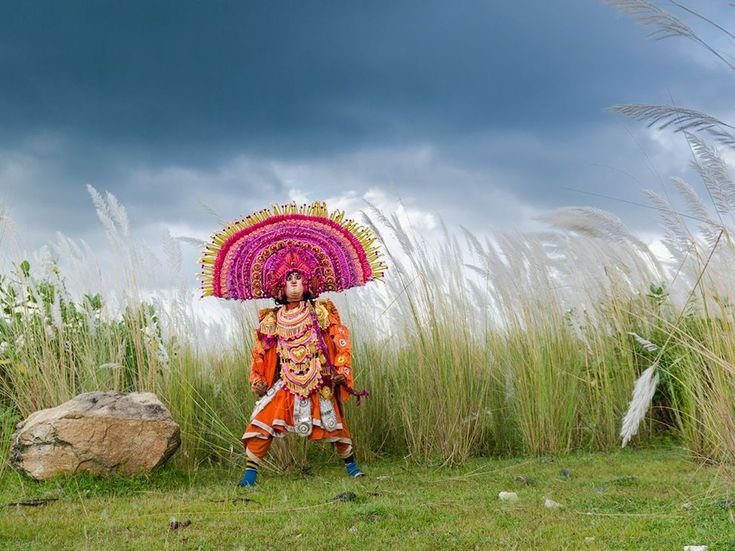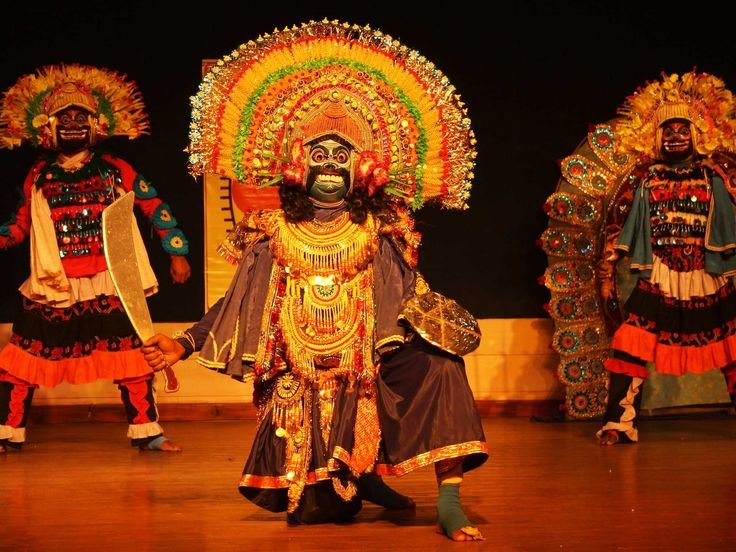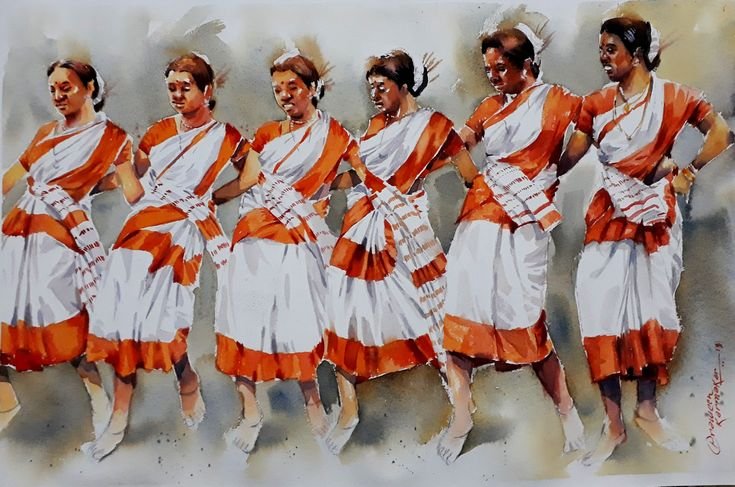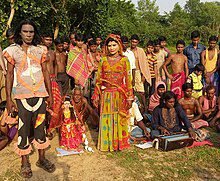Panchmura, a small village in the Bankura district of West Bengal, is renowned for its exquisite terracotta art. While the village is widely recognized for its traditional Bankura horses, its unique terracotta paintings—once an integral part of temple murals and architectural decoration—are now a fading tradition. The distinctive style of Panchmura terracotta painting, characterized by […]Read More
Tags : West Bengal
Santhal paintings, a vibrant and colorful expression of art, come from the Santhal tribe—one of India’s oldest and largest indigenous communities. Found primarily in the states of West Bengal, Jharkhand, Odisha, and Bihar, the Santhals have crafted a unique artistic style that mirrors their daily lives, traditions, and spiritual beliefs. Despite the charm and cultural […]Read More
Karma Dance, also known as Karma Naach, is a vibrant folk dance deeply rooted in the traditions of tribal communities in Central and Eastern India. This dance is primarily associated with the Karma festival, an important cultural event that symbolizes fate, nature, and prosperity. It is predominantly performed in the states of Madhya Pradesh, Chhattisgarh, […]Read More
Patua scroll painting is an ancient storytelling art form practiced by the Patua community in parts of India, especially in West Bengal, Odisha, Jharkhand, and Bihar. Known locally as Pattachitra, this tradition is a blend of painting and oral storytelling. The artists, called Patuas, create long, vertical scrolls filled with colorful, hand-painted scenes that depict […]Read More
Purulia Chhau, a semi-classical folk dance originating from the Purulia district of West Bengal, stands as a testament to India’s rich cultural heritage. This masked dance, renowned for its vibrant costumes, intricate masks, and dramatic storytelling, combines elements of martial arts and folk traditions. With its roots tracing back to ancient times, Purulia Chhau narrates […]Read More
Chhau, also spelled as Chhou, is a semi-classical Indian dance form that blends martial arts, folk traditions, and classical influences. Predominantly performed in the states of West Bengal, Jharkhand, and Odisha, Chhau has three distinct styles named after their respective geographical regions: Purulia Chhau of West Bengal, Seraikella Chhau of Jharkhand, and Mayurbhanj Chhau of […]Read More
Jhumur dance is a tradition of the tribal of Tripura, West Bengal, Odissa, and Jharkhand states of the eastern part of India, which is lively folk music that has no parallel in present day world. Sung and danced at festivals, rituals and other social get-togethers, the Jhumur is not just a form of music and […]Read More
Guess who sings of bountiful harvests under the winter moonlight, blending culture, tradition, and melody? Tusu songs, the soulful tunes of Jharkhand and West Bengal, carry the essence of agrarian life, resonating with the rhythms of the earth. These traditional winter harvest songs, sung during the vibrant Tusu Parab, encapsulate centuries of cultural heritage. Yet, […]Read More
West Bengal has a great heritage for festivals and special occasions and music and dance are inevitable parts of each occasion. One of the most distinctive forms of folklore of Bhadu geet is a popular song of love, togetherness and harvest. Bhadu Geet has been an essential component of the people of rural India, although […]Read More
Kali Puja, also called Shyama Puja is considered to be one of the largest festivals to worship the goddess Kali, whom people in the Hindu faith revere as an embodiment of ferocity. It mostly takes place in the eastern region, such as in West Bengal, Assam, Tripura and Odisha, almost coinciding with the Diwali celebrations […]Read More

